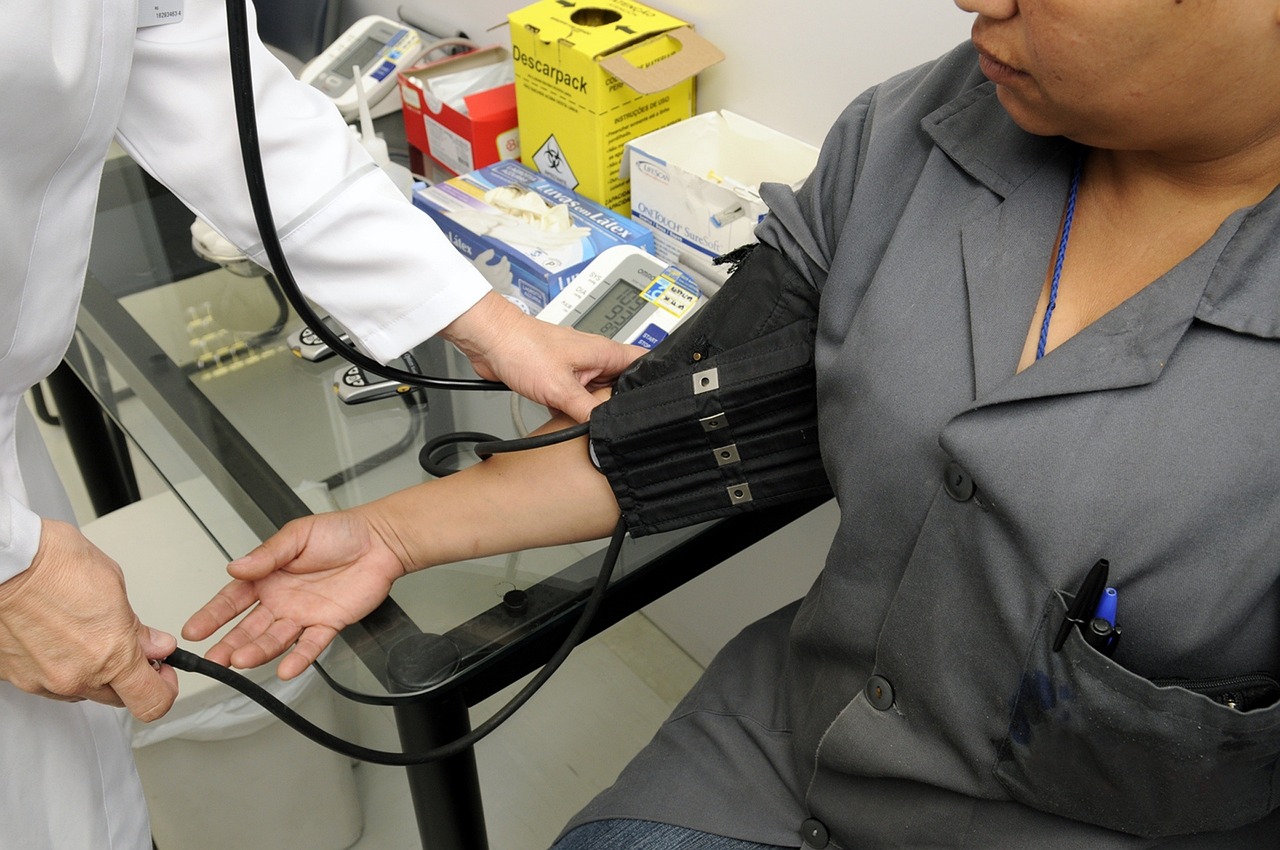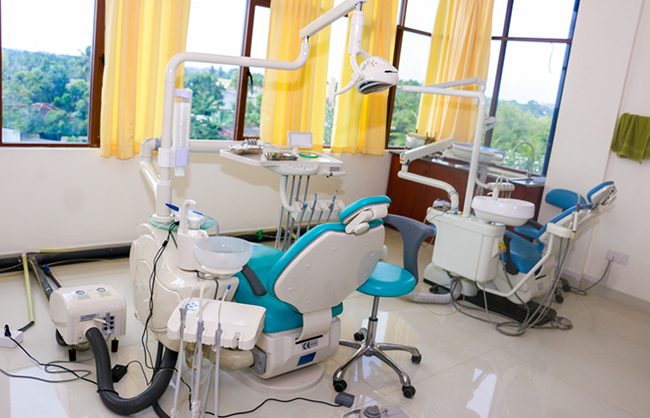Component 1 : Increase availability of comprehensive PHC services at PMCIs and Medical Officer of Health offices
Component 1 aims to strengthen (a) the minimum capabilities42 of 1,031 PMCIs and 354 MOH offices across Sri Lanka’s nine provinces, enhancing their ability to provide comprehensive PHC services, aligning Sri Lanka’s national PHC reorganization strategy. Additionally, it will strengthen the array of services offered, ensuring an integrated approach to PHC a focus on NCD prevention and management programs, geriatric and palliative care as well as readiness for climate-related emergencies and other emerging challenges such as emerging and reemerging communicable diseases.

Subcomponent 1.1 – Ensuring availability of essential inputs at PMCIs and MOH offices
The subcomponent aims to augment the capacity and operational efficiency of PMCIs, special focus on availability of essential equipment, supplies, medicines, laboratory testing, and transport capacity. Project financing will support:
- updating the national essential medicine list for PMCIs and other levels of care
- purchasing quality essential medicines, medical supplies, equipment, and laboratory reagents for PMCIs and MOH offices
- undertaking minor civil works to refurbish PMCI infrastructure to make them climate resilient and energy efficient
- procuring information technology (IT) networking equipment for improved laboratory networking facilities
- installing internet connection at PMCIs
- procuring IT equipment to improve the inter-operability and inter-connectivity of health IT systems
- purchasing motorcycles to allow dispatching of medical samples (of which at least 50 percent will be e bikes
- procuring vehicles to strengthen transport of waste to the nearest hospital incinerator facilities
- refurbishing existing wastewater treatment facilities to better treat liquid waste generated from laboratory facilities
- procuring double cabs to strengthen PHC supervision activities at grass root level
- employing innovative climate-resilient design of infrastructure (e.g., solar panels and cool roofs) at PMCIs
Activities (c), (g), (h), (i), (j), and (k) will be carried out in line the country’s climate vulnerabilities and emission reduction commitments. Those will also be part of country’s investment in climate mitigation and adaptation solutions. In addition, the above proposed procurement of equipment and electronic devices for PMCIs will follow set energy-efficiency and water efficiency standards.
Subcomponent 1.2 – Sustaining and strengthening primary health workforce at PMCIs
To overcome human resources for health (HRH) challenges, this subcomponent will support medium-term HRH planning, particularly the development of an HRH optimization strategy to strengthen recruitment, retention, distribution, and task-shifting protocols of health workers in PMCIs. The subcomponent will also finance minor refurbishment of PMCI staff quarters.
Subcomponent 1.3 – Expanding the PMCI service package to include additional services
This subcomponent will support the provision of an expanded package of PHC services to address
- the growing NCD burden (including mental health),
- increasing care needs of the rapidly aging population, GBV survivors, children special needs, school children, and oral health, and
- the urgent needs for the PHC system to be more prepared to respond to future pandemic and climate-related disaster risks.
Under GoSL’s new shared cluster model for PHC, expanded PHC services will be provided in a continuum of different types of health facilities—apex hospitals, PMCIs, as well as MOH offices. To meet these new demands, the subcomponent will finance:
- undertaking minor civil work and refurbishments for PMCIs to provide the expanded service packages, including emergency treatment units (ETUs) to function as heat clinics during extreme heat conditions);
- purchasing vital sign monitoring equipment;
- purchasing motorbikes and bicycles (including e-bikes) to facilitate provider visits to patient homes and communicable disease surveillance activities;
- purchasing equipment for remote diagnostics and consultations to expand telemedicine capacity in PMCIs and support home-based care and continued service provision during natural disasters;
- renovating and refurbishing daycare facilities for elderly as well as procurement of elderly friendly equipment and furniture;
- purchasing high dependency beds for secondary care apex hospitals which are linked to PMCIs in the shared cluster model to strengthen their capability of handling related referrals for obstetric care and neonatal care;
- upgrading Divisional Hospitals through renovation, refurbishment and procurement of necessary
equipment to provide basic specialist care facilities; and - providing TA to strengthen community support services at MOH offices to facilitate provision of mental health care services and services for GBV survivors.

Component 2 : Strengthen the quality of clinical and person-centered care at PMCIs
While component 1 focuses on the availability of services, particularly related to structural elements, component 2 focuses on quality and person-centeredness of care. Activities under this component will include: (a) enhancing capacity of HRH; (b) strengthening pharmacovigilance systems for safer use of medicines; (c) scaling up a multisectoral coordination mechanism to facilitate coordinated and integrated care across facility types and geographies; and (d) strengthening governance systems for quality assurance at the facility level.
Subcomponent 2.1 – Building capacity for human resources for health
This subcomponent aims to ensure that health care providers across all PMCIs are adequately capacitated to provide clinical care that is responsive to citizen needs and expectations as well as natural disasters and pandemics. It will therefore support operating costs, consulting, training and workshops related to:
- the implementation of the Continuous Professional Development (CPD) strategy;
- the development of updated guidelines and trainings for integrated NCD care provision (including
mental health care), risk factor management, geriatric and palliative care, care for GBV survivors, climate resilient and mitigation practices, emergency care, pandemic shocks, and disaster preparedness; - refresher in-service trainings to enhance interpersonal experiences of care and improve return for follow-up care;
- the development of support tools to promote responsiveness and patient-centered care concepts;
- capacity building on important topics including quality improvement processes and metrics, clinical audits, healthcare quality and safety implementation and monitoring practices, leadership and management, use of electronic medical records, referral mechanisms (including for survivors of GBV), management of climate-sensitive illnesses, as well as environment-friendly and sustainable healthcare practices; and
- the strengthening of provincial and district level training centers by undertaking minor refurbishments to enable use of modern technology such as distance learning platforms.
Subcomponent 2.2 – Scaling up integrated care platforms
Bypassing of PMCIs in favor of receiving care at higher-level facilities leads to system inefficiencies related to overcrowding of secondary and tertiary facilities and higher spending. Moreover, fragmented information systems negatively affect care continuation and coordination. To address those challenges, this subcomponent will finance operating, consulting and non-consulting services for the design and implementation of a referral and back-referral system. This will involve strengthening integrated platforms and networks of health facilities, and utilization of personal health records (PHR) to coordinate patient care and ensure patient information transfer between facilities. The PHRs will also help identify the vulnerable population for treatment in case of any climate shock or emergency. This subcomponent will also finance procurement of equipment required for the optimization of palliative, rehabilitative, and geriatric care, and communicable disease control activities, including equipment required for stepdown approach in palliative, geriatric, and domiciliary care.
Subcomponent 2.3 – Strengthening governance systems for quality assurance
Ensuring high-quality clinical and person-centered care provision requires robust quality assurance architecture and practices. Therefore, this subcomponent supports local technical assistance (TA) and operational, consulting and non-consulting costs related to:
- updating and developing tools and guidelines for PMCI quality management, including introduction of systems to institutionalize clinical audits, incident reviews, and near-misses;
- revising, standardizing and digitizing the Quality Supervision Tools;
- supporting the enhancement of medicine packaging to be consumer-friendly and ensure quality and safe use of medicines;
- supporting the strengthening of the pharmacovigilance system to ensure the safe and effective supply of medications and medical equipment;
- supporting standardized reporting tools and improved labeling practices in dispensing areas;
- supporting standardized routine patient experience surveys;
- supporting the update of supervision protocols and accountability measures;
- supporting trainings on quality management and clinical audits;
- strengthening the Directorate of Healthcare Quality and Safety and the Quality Management Units in the Regional Director of Health Services (RDHS) division; and
- strengthening the promotion of patient safety culture in PMCIs.
Component 3 – Strengthen health promotion, community empowerment and citizen engagement
While improved capacity and quality of care at PMCIs will enhance the availability of curative care service, it does not guarantee utilization of services and improvements in health outcomes. Further, the scope of PHC goes beyond what is provided by PMCIs, including prevention, promotion, risk factor management and behavior change particularly during climate-related disasters. Component 3 will therefore focus on addressing demand-side constraints through health promotion, community empowerment, citizen engagement, and a strengthened interface between communities and PMCIs.

Subcomponent 3.1 – Managing health promotion and NCD risk factors
Given low awareness among the public, particularly regarding the services available at PMCIs, this subcomponent will support the development and implementation of a comprehensive social and behavior change communication (SBCC) strategy to raise public awareness of available preventive and curative healthcare services that the public can utilize, including care options at PHCs during pandemic and climate-related emergencies. The SBCC strategy will also encourage women to use the available health services at PMCIs. Moreover, the SBCC strategy will address NCD risk factors to raise awareness and change lifestyle behaviors, especially among women as they have higher prevalence of risk factors such as insufficient physical activity, overweight and high cholesterol compared to men. Strengthening of adoption of healthy food culture by acts and regulations and strengthening water quality surveillance at provincial and national level will also be supported. Further, there are no solid mechanisms at the district level for NCD coordination. Therefore, this subcomponent will support a strategy to strengthen the multisectoral coordination mechanism at the district level to coordinate NCD risk factor management and other critical illnesses. Opportunities will be explored to build capacity of multi-sectoral committees to conduct targeted community awareness programs, including on GBV prevention and NCD risk factors for women.
Subcomponent 3.2 – Strengthening citizen engagement for preventive and curative care
The FFCs and the Grievance Redress Mechanism (GRM) established at each PMCI serve as the cornerstones of citizen engagement at PMCIs. This subcomponent aims to
- strengthen and expand FFCs and GRM at all PMCIs,
- revise community engagement guidelines to include community empowerment and inclusion of people disabilities and older adults’ strategies, and
- develop and implement strategies/guidelines to strengthen linkages between FFCs and mother support groups (especially to mobilize women for behavior change as well as service utilization) or any other village level platform through the provision of TA.
Component 4 : Project management and monitoring and evaluation
This component will finance activities related to Project implementation management, capacity building, monitoring and evaluation (M&E), operations research, and ministry-level supervision.

Subcomponent 4.1 – Project Management, Monitoring and Evaluation
Key activities to be conducted by the Project Coordination and Management Unit (PCMU) will include:
- project management, reporting, and supervision;
- technical support for procurement activities, financial management (FM), and environmental and social safeguards activities;
- learning and knowledge exchange;
- M&E and impact evaluations;
- capacity building related to NCD management;
- surveys and operations research (including monitoring the progress on climate-related activities); and
- institutionalization of a national excellence award in PHC.
To support knowledge generation and operations research, two large-scale surveys are proposed: a nationally representative survey to assess the quality of PHC services from the supply-side and a population-based demand-side survey to assess prevalence, risk factors, diagnosis, treatment, and effective management of NCDs. TA will prioritize supporting analytical activities to inform the HR optimization strategy. Other surveys will be conducted to track changes in key Project-relevant indicators as well as impact evaluation studies to ascertain the Project’s impact on knowledge,
attitudes, perception, and behavior.
Subcomponent 4.2 – Strengthening Project Monitoring and Management capacity at Ministry Level
This subcomponent will support:
- strengthening project monitoring capacity of the Management Development and Planning Unit of the MoH by procuring vans for the supervision of field level activities, and computers and related IT equipment to strengthen the digitization of information and real time data collection for central monitoring of Project activities at the MoH; and
- facilitating the development of the M&E system by financing TA activities and by procuring necessary IT equipment to facilitate national level monitoring of Project progress at the Department of Project Management and Monitoring (DPMM) of the Ministry of Finance (MoF).

